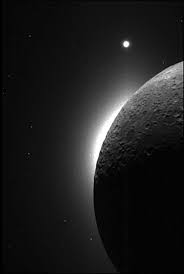Today’s Current Affairs: 21st October 2025 for UPSC IAS exams, State PSC exams, SSC CGL, State SSC, RRB, Railways, Banking Exam & IBPS, etc
Table of Contents
SOAR Program:

The Government of India launched the Skilling for AI Readiness (SOAR) programme in July 2025 to integrate artificial intelligence education and training into school curricula.
- A flagship initiative under the Skill India Mission, designed to strengthen AI literacy and competency among students (Classes 6–12) and educators.
- The programme includes structured AI modules, hands-on learning, and ethics-based training to prepare India’s youth for AI-driven careers.I
- mplemented by the Ministry of Skill Development and Entrepreneurship (MSDE) in coordination with the Ministry of Education.
Key Features:
- Three 15-hour AI modules for students and one 45-hour advanced module for educators.
- Emphasis on responsible and ethical use of artificial intelligence.
- ₹500 crore allocated in Union Budget 2025–26 to establish a dedicated Centre of Excellence for AI in Education.
- Collaboration with IITs, AICTE, and private sector partners to offer specialised AI and ML courses.
- Integration with the Skill India Digital Hub (SIDH) to ensure accessibility for students across rural and urban areas.
- Under NAPS-2, 1,480 apprentices trained between FY 2022–26 in AI-related roles such as AI Data Engineer and Machine Learning Engineer.
International Convention against Doping in Sport:

India has been re-elected as Vice-Chairperson of the Bureau for the Asia-Pacific (Group IV) at the 10th Session of the Conference of Parties (COP10) to the UNESCO International Convention against Doping in Sport, held in Paris marking the 20th anniversary of the Convention.
- The UNESCO International Convention against Doping in Sport (2005) is a multilateral treaty through which States commit to adopt national and international measures to prevent and eliminate doping in sports, ensuring fair and ethical competition.
- Adopted during the 33rd UNESCO General Conference on 19 October 2005, it entered into force on 1 February 2007.
- Today, it has 192 States Parties, making it UNESCO’s second most ratified treaty.
- Aim:
- To harmonize anti-doping laws and standards worldwide.
- To ensure a level playing field for athletes.
- To promote integrity, ethics, and health in sports by curbing performance-enhancing drug use.
- Key Features:
- Legal Framework: Mandates States to align national anti-doping measures with WADA’s Code.
- Global Cooperation: Encourages international collaboration among governments, sports bodies, and scientific institutions.
- Funding Mechanism: Establishes the Anti-Doping Fund for capacity-building and awareness programs.
- Ethical Oversight: Reviews emerging issues like gene doping and traditional pharmacopoeia to preserve sport values.
- Governance Reforms: COP sessions elect a Bureau and Approval Committee to oversee compliance and financing.
Special Campaign 5.0:

Special Campaign 5.0 is making headlines as its implementation phase(October 2–31, 2025) is underway across Indian government offices. Ministries have reported significant progress in clearing public grievances.
- The Special Campaign 5.0 (officially, the Special Campaign for Disposal of Pending Matters 5.0 or SCDPM 5.0) is an initiative of the Government of India led by the Department of Administrative Reforms and Public Grievances (DARPG).
- Building on the success of earlier editions, Campaign 5.0 focuses on “Minimizing Pendency and Institutionalizing Swachhata.”
- Primary Objectives:
- Reduce pendency by expediting disposal of public grievances, appeals, and inter-ministerial references.
- Review and close old physical and e-files to promote digital efficiency.
- Conduct cleanliness drives in workplaces and public-facing offices.
- Ensure scientific e-waste and scrap disposal under the E-Waste Management Rules, 2022.
Lunar Exosphere:

India’s Chandrayaan-2 lunar orbiter has made a path-breaking scientific observation – for the first time ever, it has detected the effects of the Sun’s Coronal Mass Ejection (CME) on the Moon’s exosphere. The findings were obtained using CHACE-2 (Chandra’s Atmospheric Composition Explorer-2), one of the principal scientific instruments onboard the orbiter.
- The Moon’s atmosphere is extremely thin and classified as an exosphere, where gas atoms and molecules rarely collide. Its surface forms the lower boundary of this exosphere.
- The lunar exosphere contains gases such as helium, argon, and neon, with traces from radioactive decay, solar wind, and meteoroid impacts.
- Due to its low density, it cannot retain heat, causing extreme temperature variations.
- This fragile atmosphere is produced by several processes, including:
- Interaction with solar radiation and solar wind (ions of hydrogen, helium, and heavier elements).
- Meteorite impacts that release atoms and molecules from the lunar surface.
- A Coronal Mass Ejection (CME) is a massive, violent expulsion of plasma (a superheated gas of protons and electrons) and magnetic fields from the Sun’s outer atmosphere, the corona, that erupts outward into the solar system.
- It is one of the largest forms of solar activity and a major driver of space weather.
Water ATM Initiative:
Innovative mine-water reuse projects in Jharkhand and Maharashtra — including Water ATMs by ACIC IIT-ISM Dhanbad and mine-water fisheries initiatives are transforming coal mine discharge into clean drinking water and sustainable livelihoods.Water ATMs are automated water-vending machines that purify and dispense treated mine water for public use at nominal costs, providing affordable access to clean drinking water.
Launched by Developed under the Atal Community Innovation Centre (ACIC) at IIT-ISM Dhanbad, in collaboration with the Dhanbad Municipal Corporation (DMC).Aim is to convert discharged mine water into safe potable water, promote community health, and create a sustainable circular water economy in mining regions.
Quantum Echoes Algorithm:
Google announced that its quantum processor “Willow” has achieved the first-ever verifiable quantum advantage using a new algorithm called Quantum Echoes, running 13,000 times faster than the world’s best supercomputers.Quantum Echoes is an advanced quantum algorithm based on the principle of out-of-time-order correlators (OTOC). It is designed to study how information spreads, scrambles, and reverses in a quantum system — essentially acting as a time-reversal experiment to detect hidden quantum interactions.Created by the Google Quantum AI and Collaborators Team.Aim is to demonstrate a verifiable quantum advantage, where quantum hardware outperforms classical supercomputers in a measurable and repeatable way, to model complex quantum interactions with unprecedented precision for use in physics, chemistry, and materials research.The algorithm sends a quantum signal into a system of qubits, lets it evolve, then reverses time evolution to produce a measurable “echo.” This echo reveals how information was scrambled and restructured during the process. By adding a small “perturbation” midway and observing how the system reacts, scientists can measure interference effects, confirming the quantum nature of the computation.The process, run on the Willow quantum processor, was verified as a true quantum interference phenomenon, impossible for classical systems to replicate efficiently.
United Nations celebrates 80 years of its establishment:
As the United Nations celebrates 80 years of its establishment (1945–2025), it reflects on its evolution from a post-World War II peacekeeping body to a global institution addressing 21st-century challenges.Emerging from the ashes of World War II, the UN was envisioned as a collective security mechanism to prevent future conflicts, promote human rights, and uphold international law.Established on 24 October 1945 with 51 founding members, the UN’s framework especially the Security Council (UNSC) was shaped by post-war power hierarchies granting veto powers to five permanent members (P5).
‘23for23’ Initiative:
India celebrated International Snow Leopard Day (October 23, 2025) with the nationwide ‘#23for23’ campaign.Government also unveiled the first-ever national Snow Leopard Census, recording 718 individuals across the Indian Himalayas.It is a nationwide awareness campaign launched by the Ministry of Environment, Forest and Climate Change (MoEFCC) to engage citizens in snow leopard conservation through community-driven participation.
Aim is to raise awareness about snow leopard habitats and conservation challenges,to inspire public involvement in protecting India’s high-altitude ecosystems under the Global Snow Leopard and Ecosystem Protection Programme (GSLEP).Collaborating Agencies: Led by MoEFCC, supported by WWF-India, Snow Leopard Trust, and local communities under the Project Snow Leopard.
Key Findings of the Snow Leopard Census in India (2025):
- The census recorded 718 individual snow leopards across India’s Himalayan landscape — marking the first official nationwide estimate.
- Ladakh: 477 individuals — the highest population in India.
- Himachal Pradesh: 51 individuals.
- Uttarakhand: 71 individuals.
- Arunachal Pradesh & Sikkim: 61 individuals combined.
- Jammu & Kashmir (excluding Ladakh): 58 individuals.




